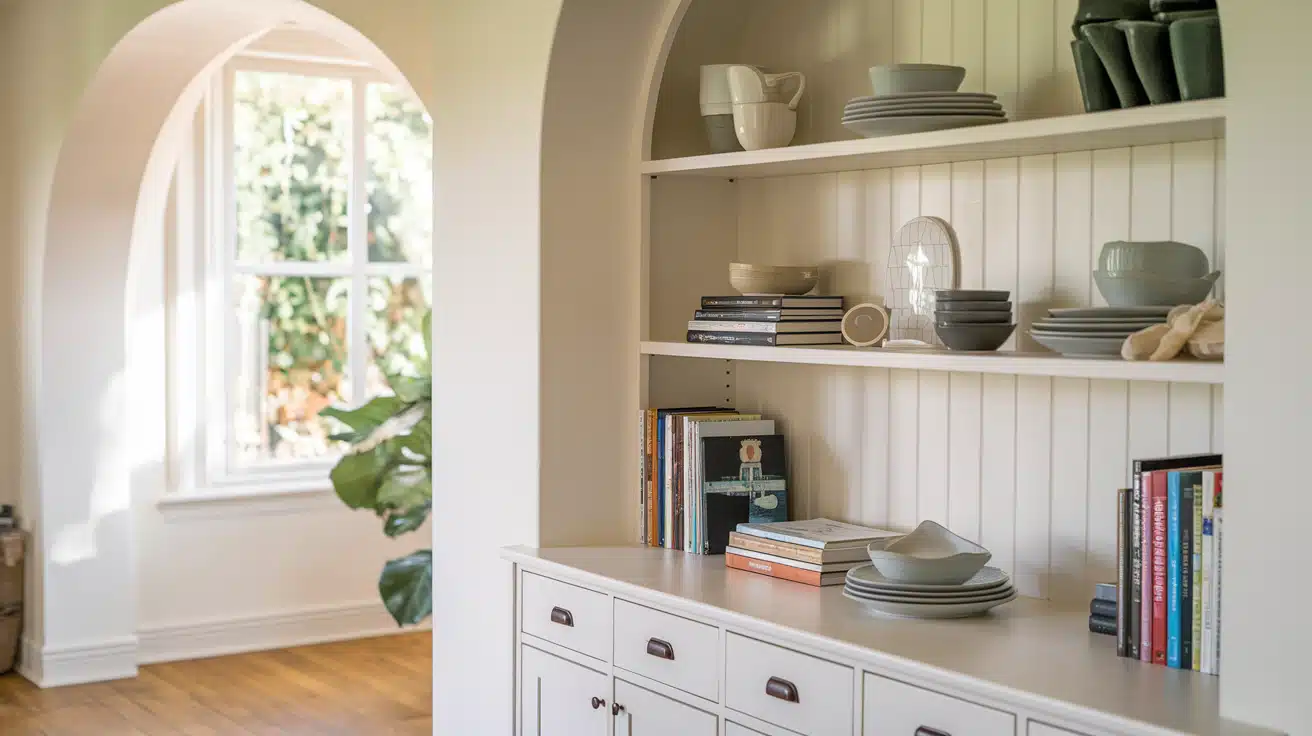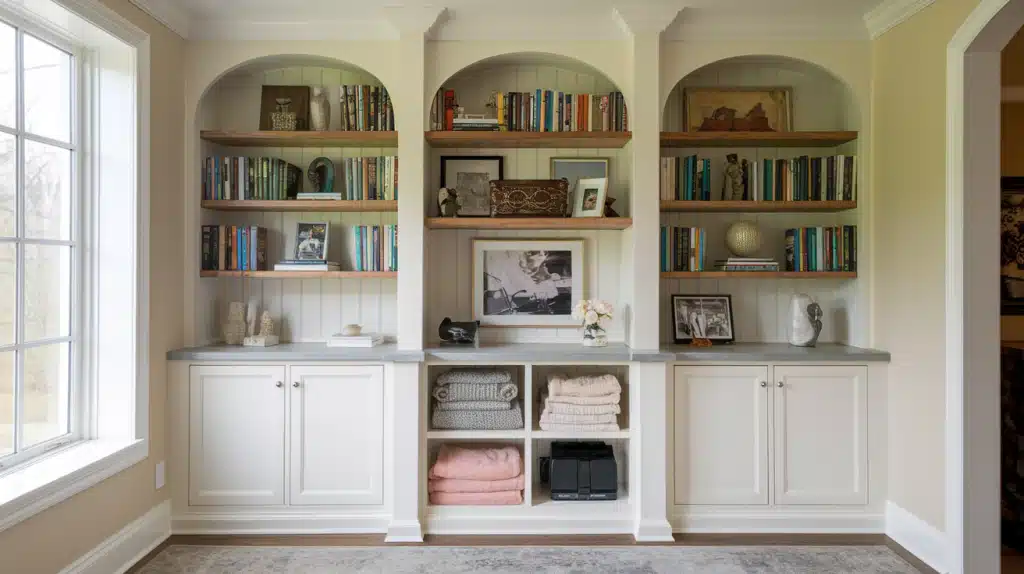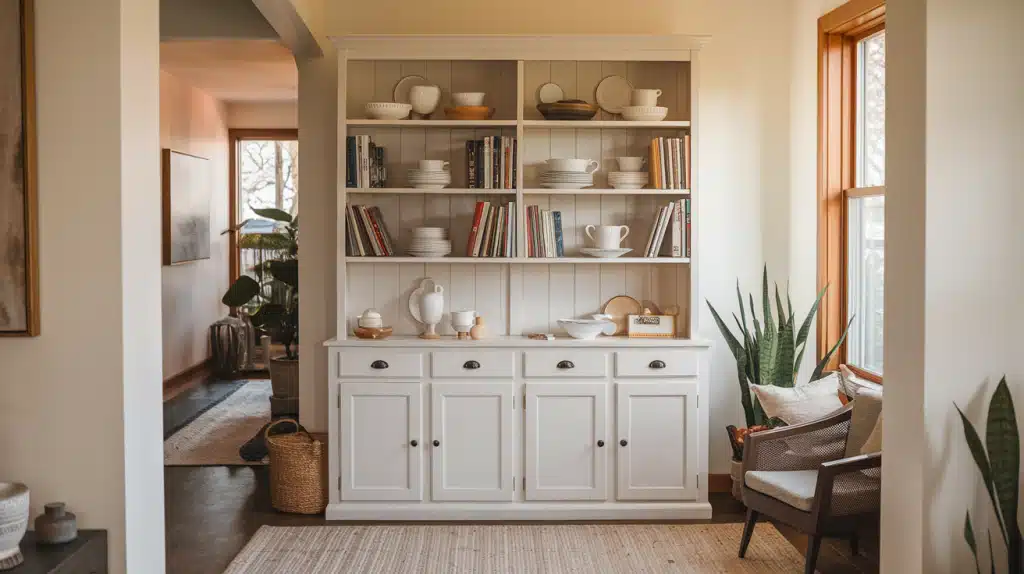Ever walked into a beautifully decorated dining room and wondered what makes it feel so complete?
Chances are, there’s a pretty hutch pulling the whole look together. A hutch is more than just furniture; it’s a game-changer for storage and style.
Whether you’re displaying your grandmother’s china collection or organizing your home office supplies, this versatile piece works wonders in any space.
But what exactly is a hutch, and how do you choose the right one for your home?
In this guide, we’ll study everything from the history and types of hutches to styling tips that’ll make your piece look magazine-worthy.
Let’s look into the world of hutches and learn why they’ve remained a household favorite for centuries.
What Is a Hutch?
A hutch is a piece of furniture with shelves or cabinets mounted on a base, like a buffet, desk, or dresser. It’s designed for both storage and decoration and is commonly used in kitchens, dining rooms, and home offices.
Think of it as two furniture pieces stacked together. The bottom part typically has drawers or closed cabinets for hidden storage.
The top section features open shelves or glass-fronted cabinets for displaying dishes, books, or decorative items.
You’ll often see kitchen hutches holding dinnerware and glassware. Dining room hutches showcase fine china and serving pieces.
Desk hutches keep office supplies organized while adding vertical storage.
The beauty of a hutch is its versatility. It maximizes vertical space, adds character to any room, and keeps things organized.
History and Origin of the Hutch Furniture
The word “hutch” has humble beginnings. It comes from the Old French word “huche,” which meant a chest or box used for storage.
In medieval times, people used hutches to store bread, grains, and other essentials. These early versions were simple wooden boxes with lids, far from the decorative pieces we know today.
Over time, the hutch evolved significantly. During the 17th and 18th centuries, European craftsmen began adding shelves and display areas to these storage chests.
This changed them into the two-tiered furniture we recognize now.
Key milestones in hutch evolution:
- Medieval era: Basic storage chests for food preservation
- Colonial period: Became popular in American homes as kitchen dressers
- Victorian era: Grew more ornate with glass doors and decorative details
- Mid-20th century: Scaled down for smaller homes and apartments
- Modern day: Available in various styles from rustic farmhouse to sleek contemporary
What started as a practical farmhouse necessity became a statement piece. Today’s hutches blend that historical storage function with modern design sensibilities, fitting seamlessly into any decor style.
Types of Hutches for Home and Office
Hutches come in different styles to suit various rooms and purposes. Each type serves a unique function while adding storage and visual appeal to your space.
1. Dining Room Hutch
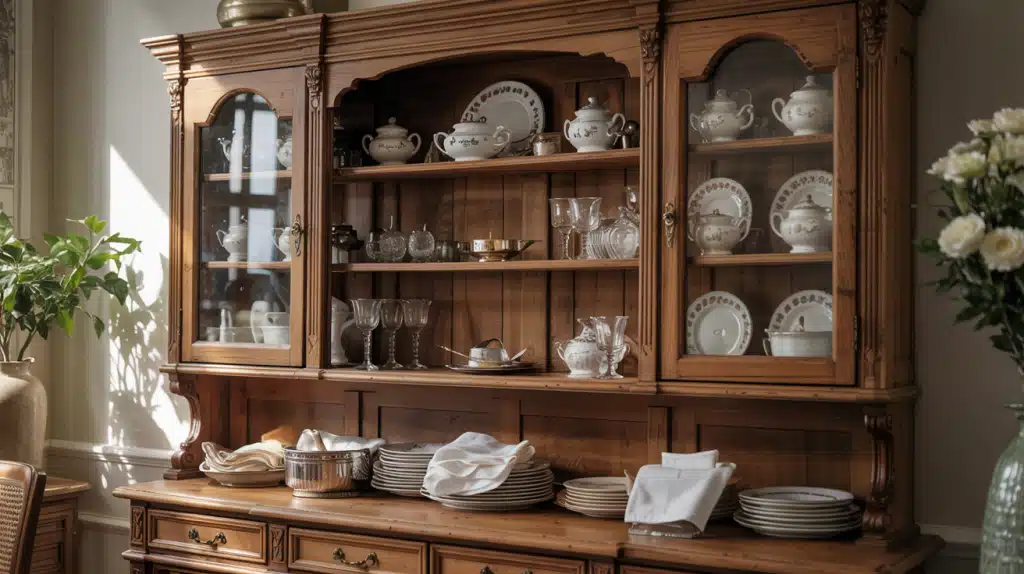
This is the classic hutch most people picture. It’s ideal for showcasing your best dishes, glassware, and serving pieces.
The lower cabinets hide linens and extra dinnerware, while the upper shelves showcase your collection. Many feature interior lighting to highlight special china or crystal.
Traditional dining hutches often include plate grooves and stemware racks. They create a focal point in your dining area while keeping entertaining essentials organized.
Whether you’re hosting dinner parties or family gatherings, everything you need is beautifully displayed and easy to access.
2. Kitchen Hutch
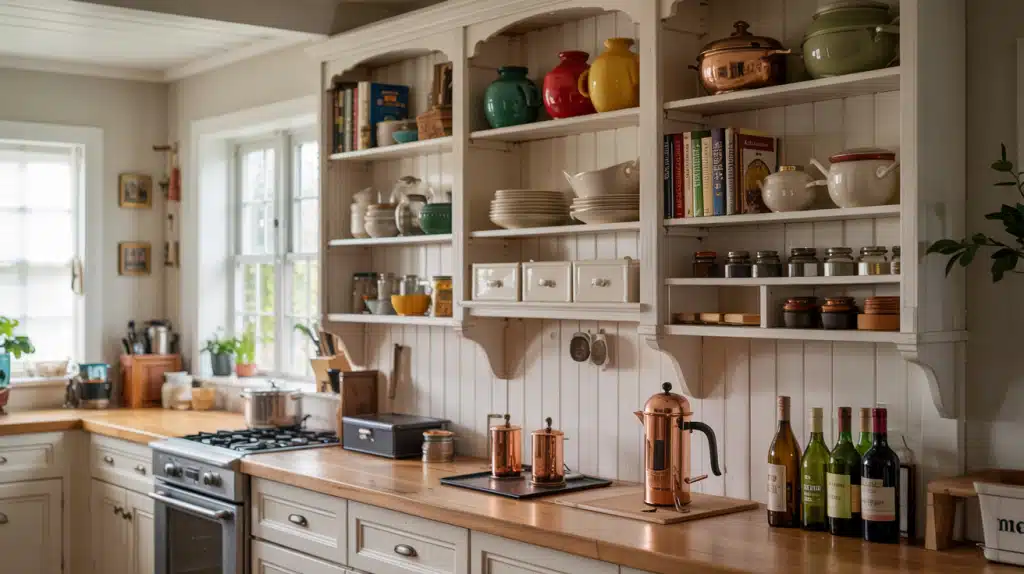
A kitchen hutch is all about function. It’s great for storing cookware, bakeware, and pantry items.
You can keep everyday dishes within easy reach on open shelves while tucking away small appliances below. Some include wine racks or built-in spice storage.
These pieces work especially well in kitchens lacking cabinet space. They can hold your coffee station, display your cookbook collection, or organize dry goods.
The combination of open and closed storage means you can show off pretty items while hiding the clutter.
3. Office Hutch or Desk Hutch
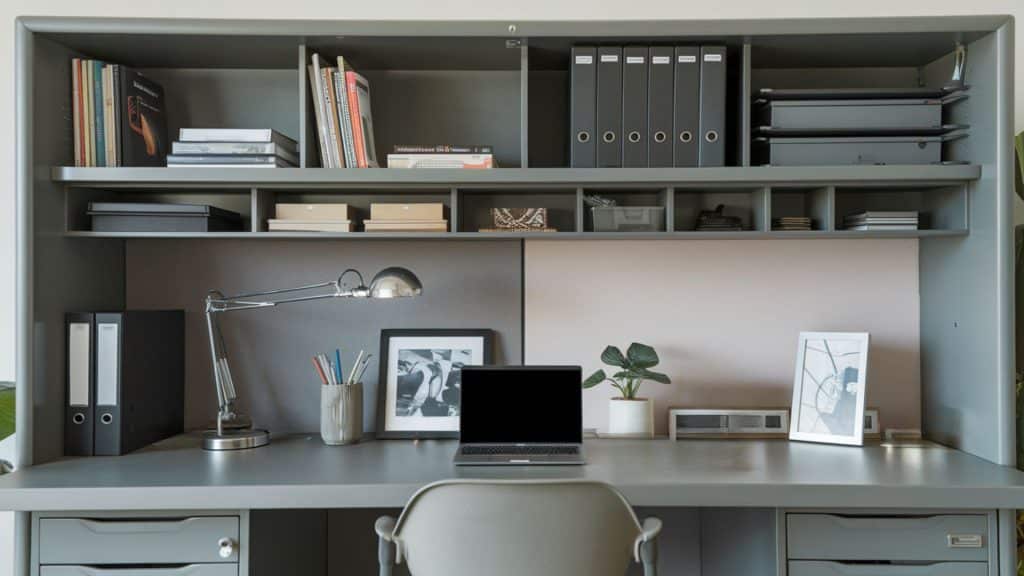
This workspace essential helps organize documents and office supplies. It sits atop a desk, adding vertical storage without taking up floor space.
Perfect for keeping files, books, and supplies within arm’s reach while maintaining a tidy workspace.
Modern desk hutches often include cable management features and adjustable shelves. They’re brilliant for small home offices where maximizing space is crucial.
You can customize the shelving to fit binders, tech equipment, or personal items that inspire your workday.
4. Living Room or Bedroom Hutch
These versatile pieces work perfectly for books, décor, or entertainment setups. Display your favorite reads, family photos, or collectibles while storing media equipment or extra blankets below.
In bedrooms, they can function as dressing stations or vanity storage. In living rooms, they make excellent TV stands with added display space.
The adaptability of these hutches makes them valuable in any room needing extra organization and style.
Popular Hutch Materials and Design Styles
Choosing the right material and style changes how a hutch fits into your home. Here’s a quick overview of your options.
Common Materials:
| Material | Characteristics | Best For |
|---|---|---|
| Wood | Durable, timeless, and develops patina over time. Options include oak, maple, cherry, and pine. | Traditional and long-lasting pieces |
| Glass | Elegant, protects items from dust while keeping them visible | Cabinet doors and display shelves |
| Metal | Industrial edge, modern look with frames or accents | Contemporary and industrial spaces |
| Laminate | Affordable, mimics wood grain at a lower cost | Budget-friendly options |
Design Styles:
| Style | Key Features | Aesthetic |
|---|---|---|
| Farmhouse | Distressed finishes, beadboard backing, vintage hardware | Cozy, countryside charm |
| Rustic | Natural wood textures, minimal finishing, reclaimed materials | Organic, imperfect beauty |
| Modern | Clean lines, sleek silhouettes, mixed materials | Contemporary and streamlined |
| Minimalist | Simple geometric forms, no decorative elements | Function-focused simplicity |
| Scandinavian | Light woods, white or neutral tones | Airy, uncluttered feel |
The finish you choose dramatically impacts your space. Dark stains like espresso or walnut add warmth and sophistication to formal dining rooms.
Light finishes, such as whitewash or natural oak, brighten spaces and make rooms feel more open. Painted hutches in navy, sage, or crisp white inject personality and can anchor your entire color scheme.
Choosing and Styling Your Hutch
Finding the right hutch and styling it beautifully doesn’t have to be complicated. Here’s how to select the perfect piece and make it shine in your space.
1. Measure Your Available Space
Start with the basics. Measure your available space carefully, including width, depth, and ceiling height. Hutches are tall pieces, so you’ll want at least 6-12 inches of clearance above for visual breathing room.
Don’t forget to measure doorways and hallways to ensure the hutch can fit through them.
2. Match Your Existing Furniture
Your hutch should complement what you already have. Match the hutch color and finish with your existing furniture for a cohesive look.
If your dining table is dark walnut, choose a similar tone. The hardware matters too; brass handles suit traditional spaces, while modern pulls work in contemporary rooms.
3. Look for Smart Features
Check for useful features, such as adjustable shelves that let you customize spacing for different items. Built-in lighting adds ambiance and highlights your displays beautifully.
Quality construction with dovetail joints and soft-close hinges ensures your hutch lasts for years.
4. Combine Function and Beauty
The magic of hutch styling is blending practical items with decorative pieces. Mix everyday dishes with books, plants, or candles.
This creates visual interest while keeping the hutch useful. Don’t feel like everything needs to be on display; use lower cabinets for items you don’t want visible.
5. Use Symmetry and Layering
Create balance by arranging items symmetrically. Place matching candlesticks on either end of a shelf or flank a centerpiece with similar objects.
Layering adds depth, lean plates or cutting boards against the back wall, then place smaller items in front. Stack books horizontally and top them with a small plant or decorative box.
Vary heights to keep things interesting. Tall vases, medium bowls, and small decorative objects create a visual rhythm that draws the eye across the shelves.
6. Add Personal Touches
When I first styled my kitchen hutch, it looked cluttered and chaotic. I removed half the items and grouped the remaining items by color and size. The change was immediate; suddenly, it looked intentional and magazine-worthy. Sometimes less really is more.
Now that you know how to choose and style your hutch, it’s time to make it work for your home.
Conclusion
A hutch brings together the best of both worlds: practical storage and beautiful display space.
Whether you choose a farmhouse-style piece for your kitchen or a sleek modern hutch for your office, this furniture staple adapts to your needs and style.
Remember to measure your space, match your existing décor, and have fun with the styling process. Mix functional items with personal treasures that tell your story.
The right hutch doesn’t just organize your belongings; it becomes a focal point that guests notice and admire. Ready to change your space?
Start digging hutch options today and see how this timeless piece can elevate your home. Your perfectly styled hutch is waiting to become the heart of your room.

